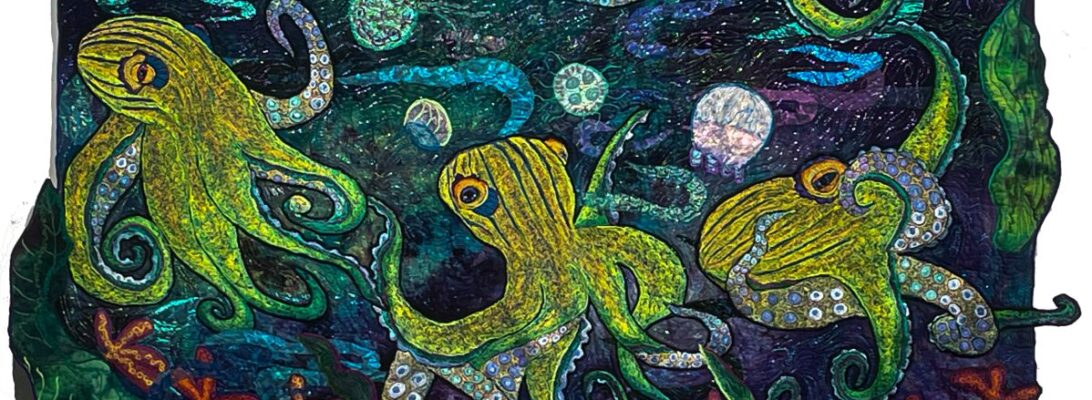We’ve talked alot about progressive color. Any image with a flat color scheme is going to be just that. Flat. Shading creates a top and a bottom, a sense of where something is in space and dimensionality. There are a million ways to shade. Shading is about value. it’s also about creating a dimensional image. Shading makes things round. Which helps them look real, even if the color is a bit wonky. But it can be managed many ways. Here are some of the ways I build color schemes.

as a series of the same color

a base color with a shocker and shader, say, orange. warm yellow, yellow. cool yellow, with purple and green (see Shockers and Shaders)

as a undershading with a dark color and creating a layer of complementary over stitching (Under the Skin: Thoughts about Shading)

as colors zoned next to each other.
Almost always, I’m using progressive color. You can see the colors line up from dark to light to create shadows and space.
We’ve also talked about over stitching, edge stitching. I usually do a final stitch over in black, just to clean up the edge from rough stitching. See Hard Edge Applique: Defining the Line.

These birds are by their nature outlined, feather by feather. Not just with black but a bright outline as well.’
One of the basic color rules is that your background defines the light of the piece. If tyour images are in an orange light, then the outlines are orange. So I shaded the outlines as well as the basic shaded background. Do I have that many shades of orange thread? Of course I do!






Shading the orange outline as well as the birds helps establish their round plump little selves.
Next week I’ll share what happened when I tried to do a reflexion of the birds in their pond.










































































